-

The glossy leafed Eupomatia laurina
This ancient flowering plant has a fossil record of 120 million years, it’s primitive flowers are a legacy from Gondwana. Isn’t that mind blowing!? The perfumed, glossy green tree with edible fruits is the perfect addition to a bush food garden. My Mum’s Eupomatia laurina is flowering and this is the first time we have…
-
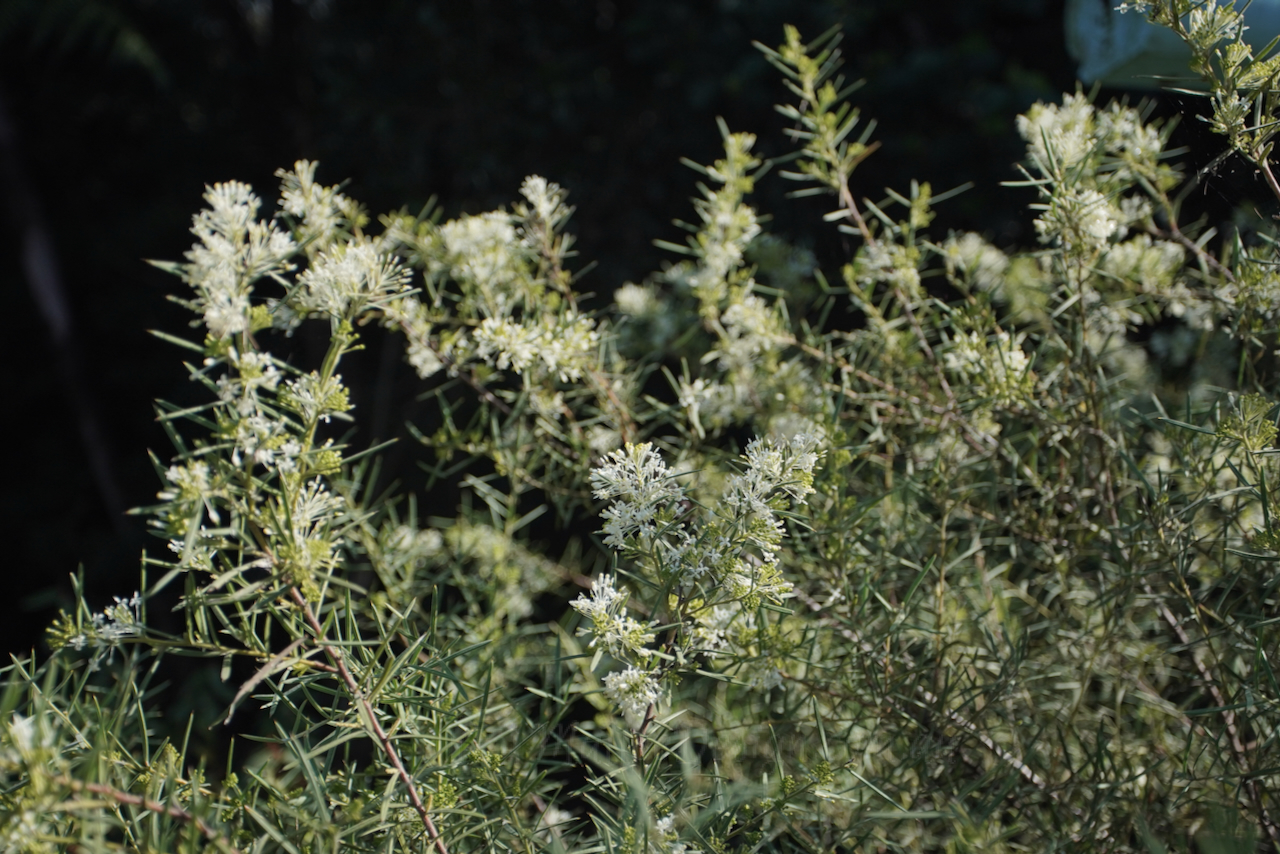
Grevillea anethifolia: Prefectly Prickly
This Grevillea is commonly known as the ‘Spiny Cream Spider Flower’ and is very aptly named. The leaves have needle like points and the whole plant makes a wonderful dense prickly shelter for small birds. These photos were taken in the Illawarra Grevillea Park, I also have a grafted Grevillea anethifolia growing happily in my…
-
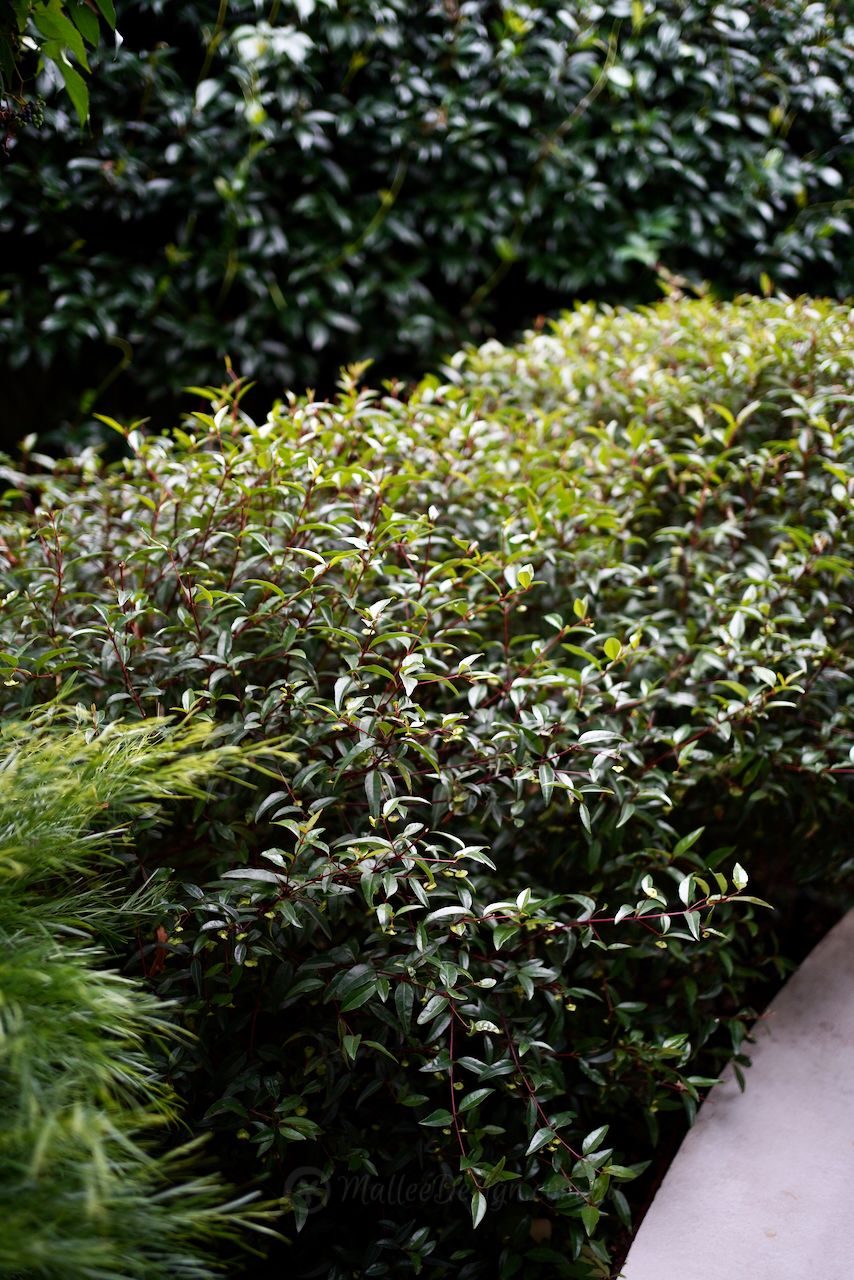
Correa baeuerlenii
Here is another of my very favourite Correas that is such a useful plant in the landscape. Correa baeuerlenii or Chef’s Hat Correa is found naturally growing on the south coast of NSW on shady, damp sites, therefore it grows happily under large trees and will cope with periods of dry and also light frost.
-
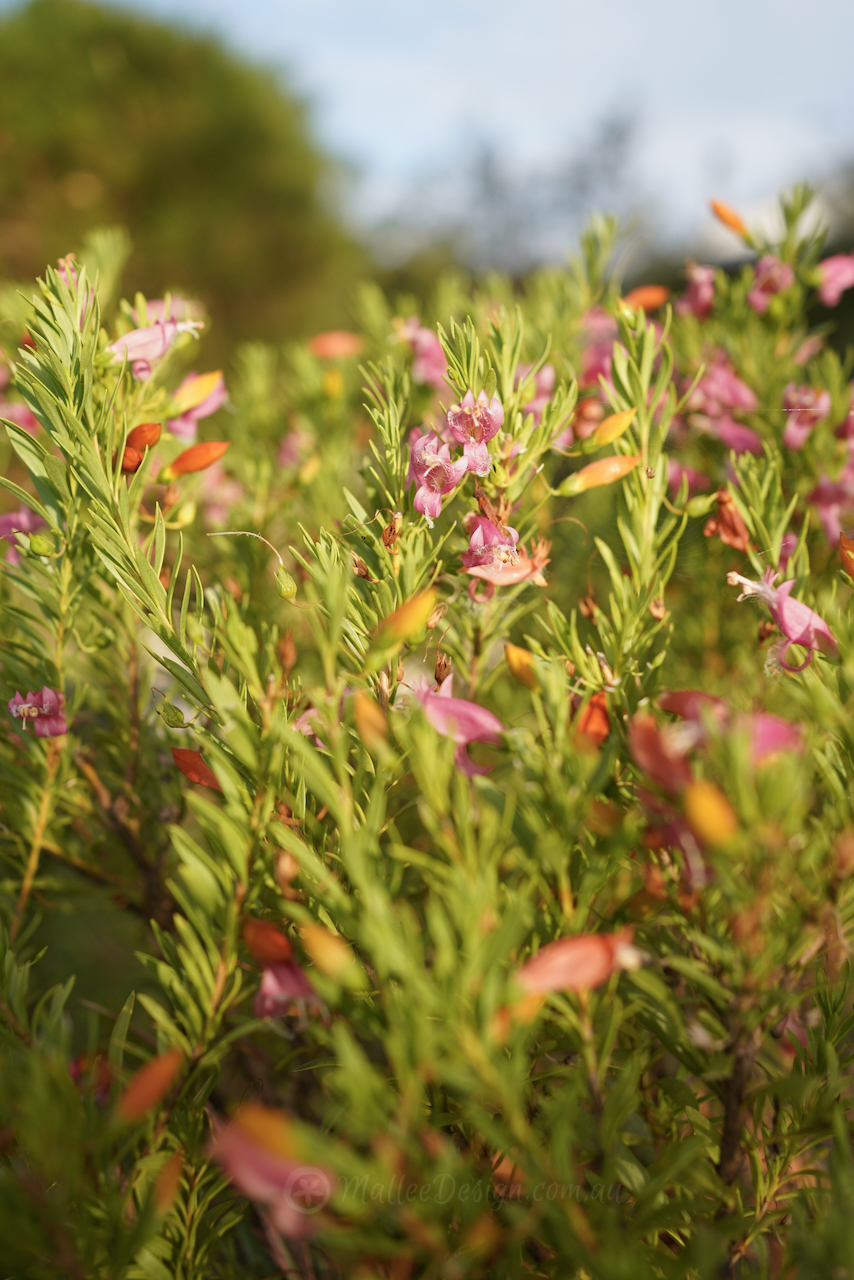
So much Joy: Eremophila racemosa x maculata ‘Fairy Floss’
This Emu bush is always a great performer in a difficult postion, providing so my joy with its multicolured buds and blooms. I have been growing Eremophila ‘Fairy Floss’ for a number of years now and have found it to be particularly tough and hardy. What I didn’t realise was that it is a cross…
-
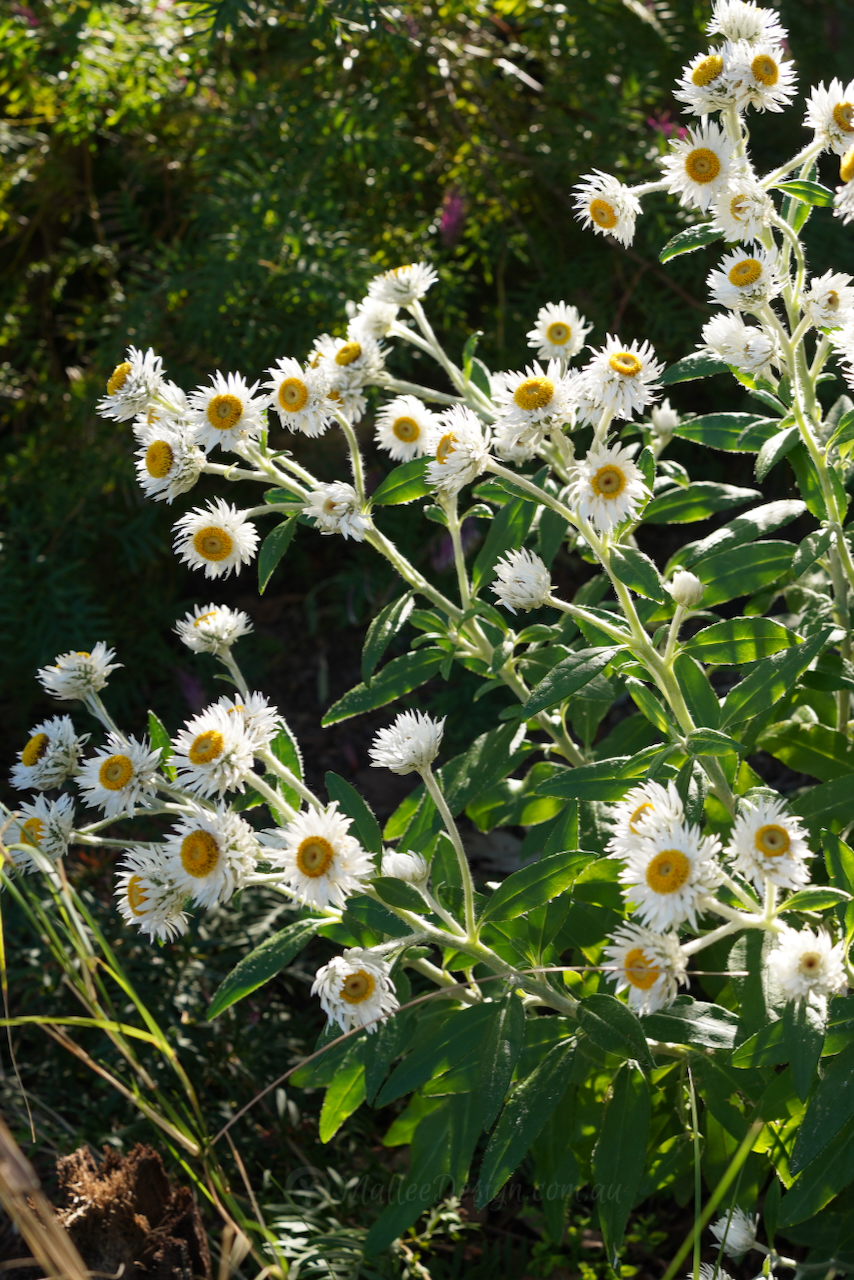
Coronidium elatum: The lesser Known paper daisy
This is a paper daisy which you may have seen growing in the bush, popping its flower heads up but often looking quite scraggly. Well the good news is this species of paper daisy makes a wonderful garden specimen. It responds so well to pruning, it can be shaped into a small shrub and will…
-
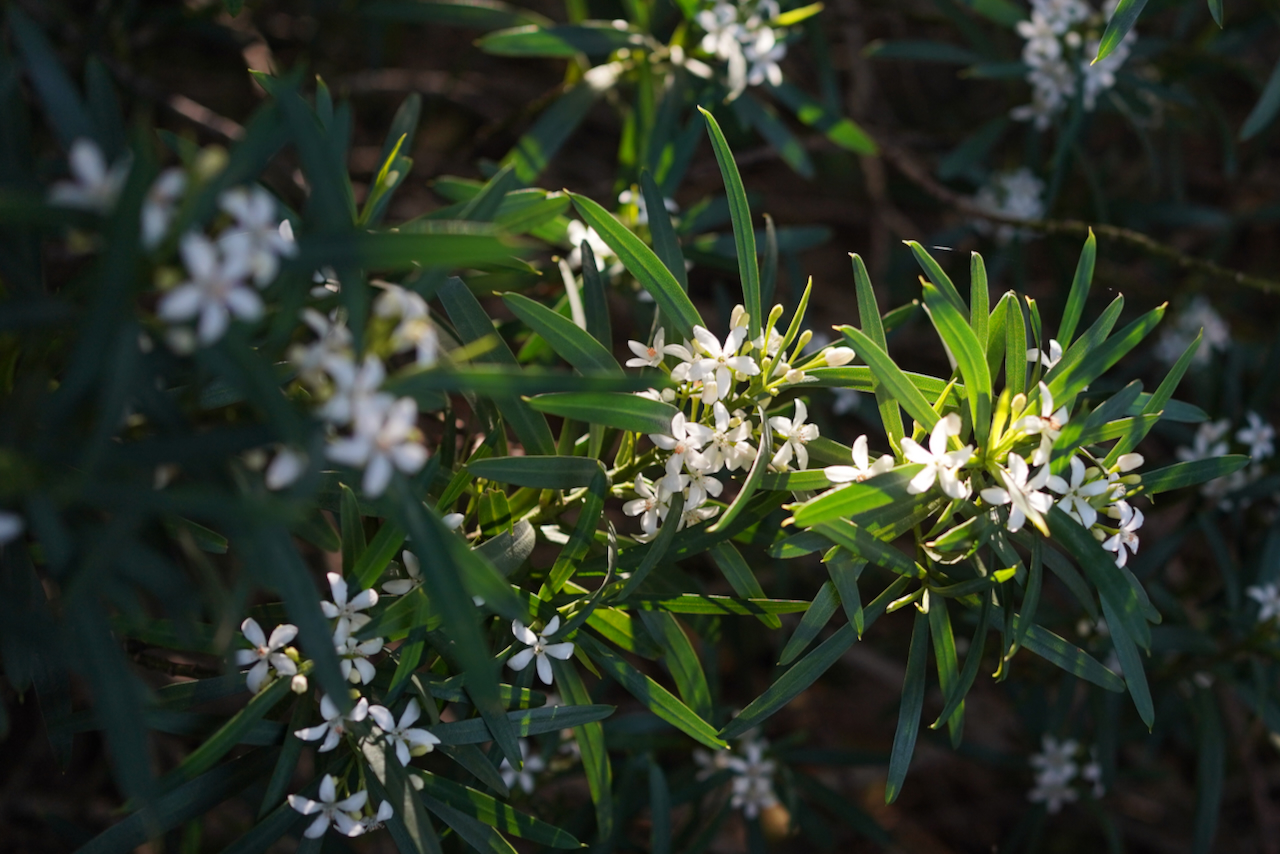
Philotheca myoporoides and it’s many forms
This gorgeous shrub is called Wax Flower or Philotheca, which apparently means “loving receptacle”. And that it is, providing plenty of flowers for pollinators and scent for humans, it is a very hardy species which can handle sun and shade in equal measure. Because of its hardiness it is one of the most widely cultivated…
-
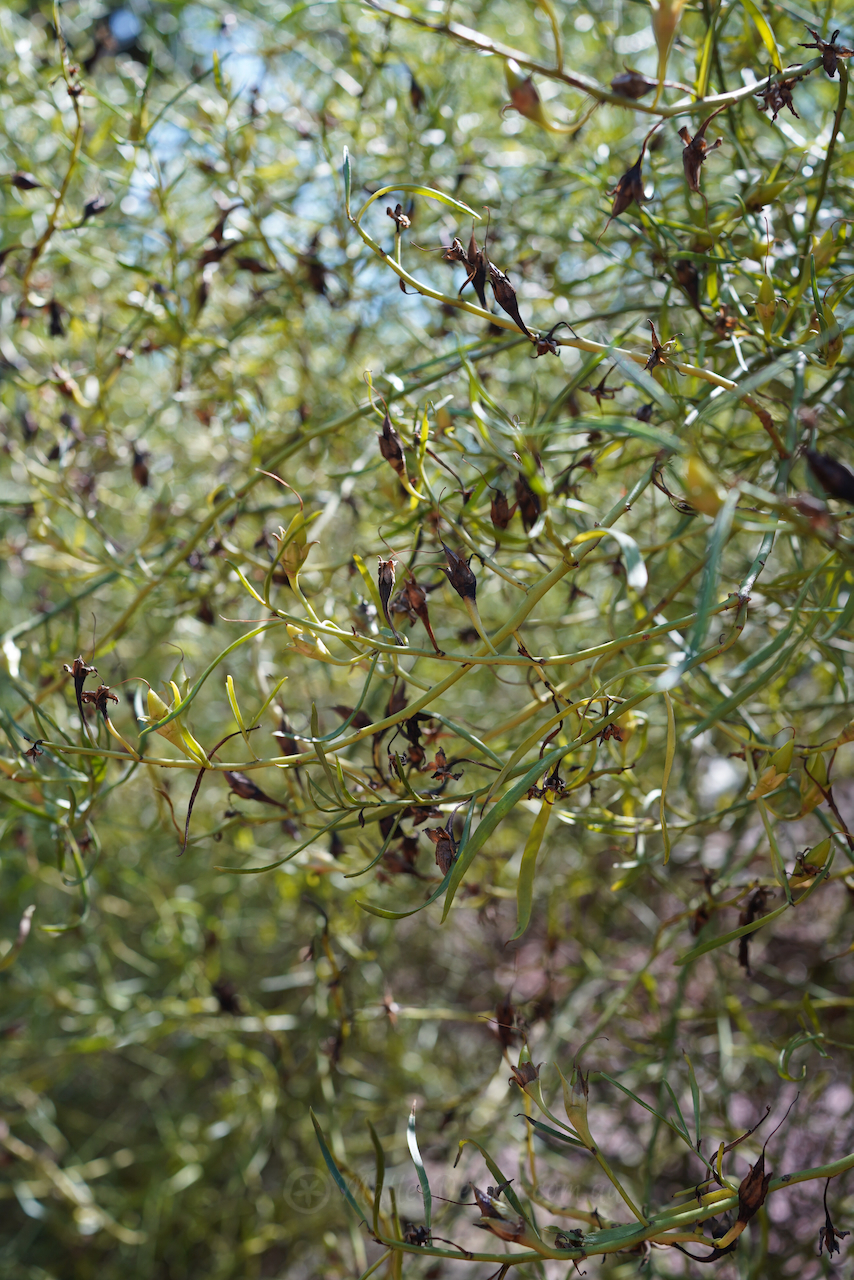
The multifaceted Eremophila Polyclada
This is Twiggy Emu Bush, lives up to its name, this facinating emu bush seems to be showy no matter what stage of flowering it is at. The spent flowers leave behind these showy yellow fruits , and sometimes also left behind is the black remains of the petals, this creates a mix of white,…
-
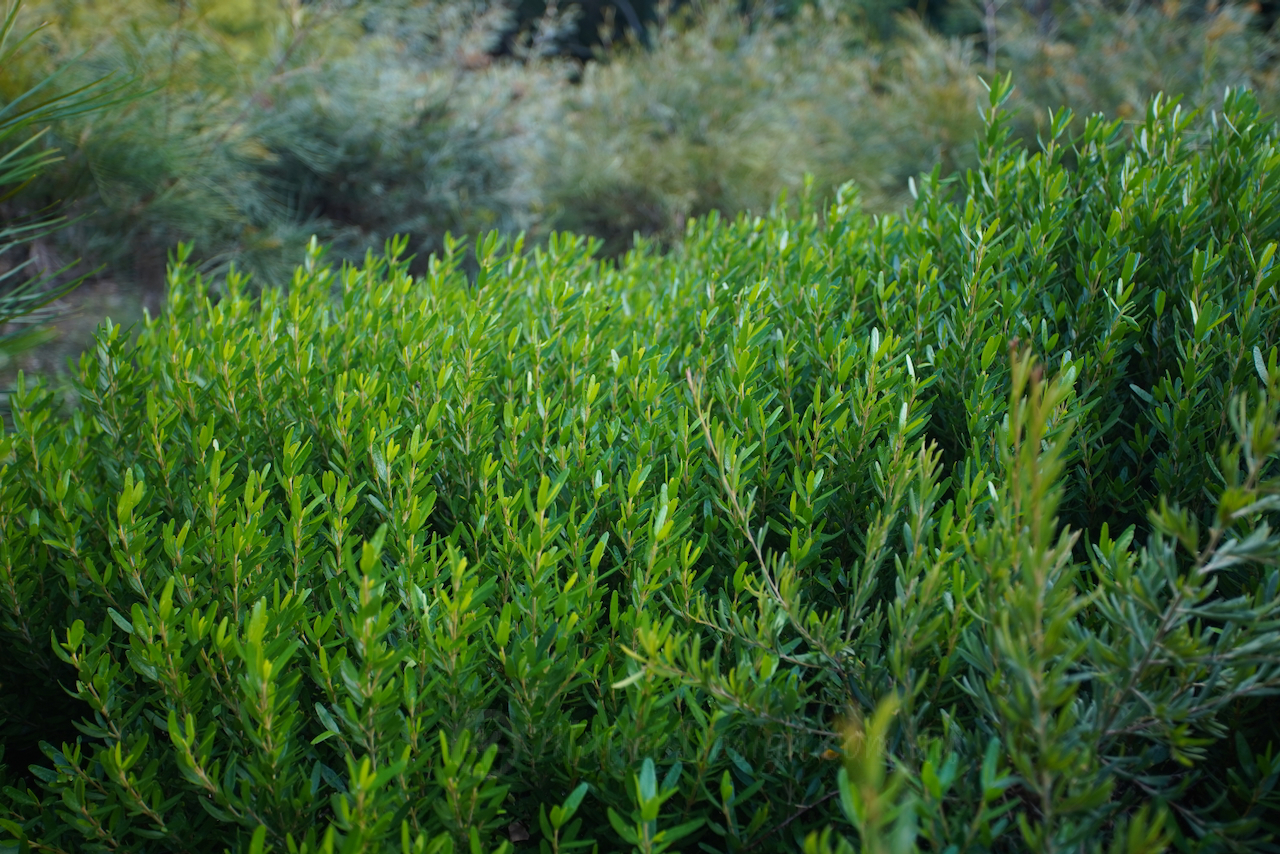
however you like it: correa glabra
This small to medium shrub is commonly known as Rock Correa, due to its ability to grow in gravelly soils, making it super tough. I absolutly love Correas but find it quite difficult to grow them in my location. Correa glabra is easily the toughest one I use in coastal NSW gardens. In fact the…
-
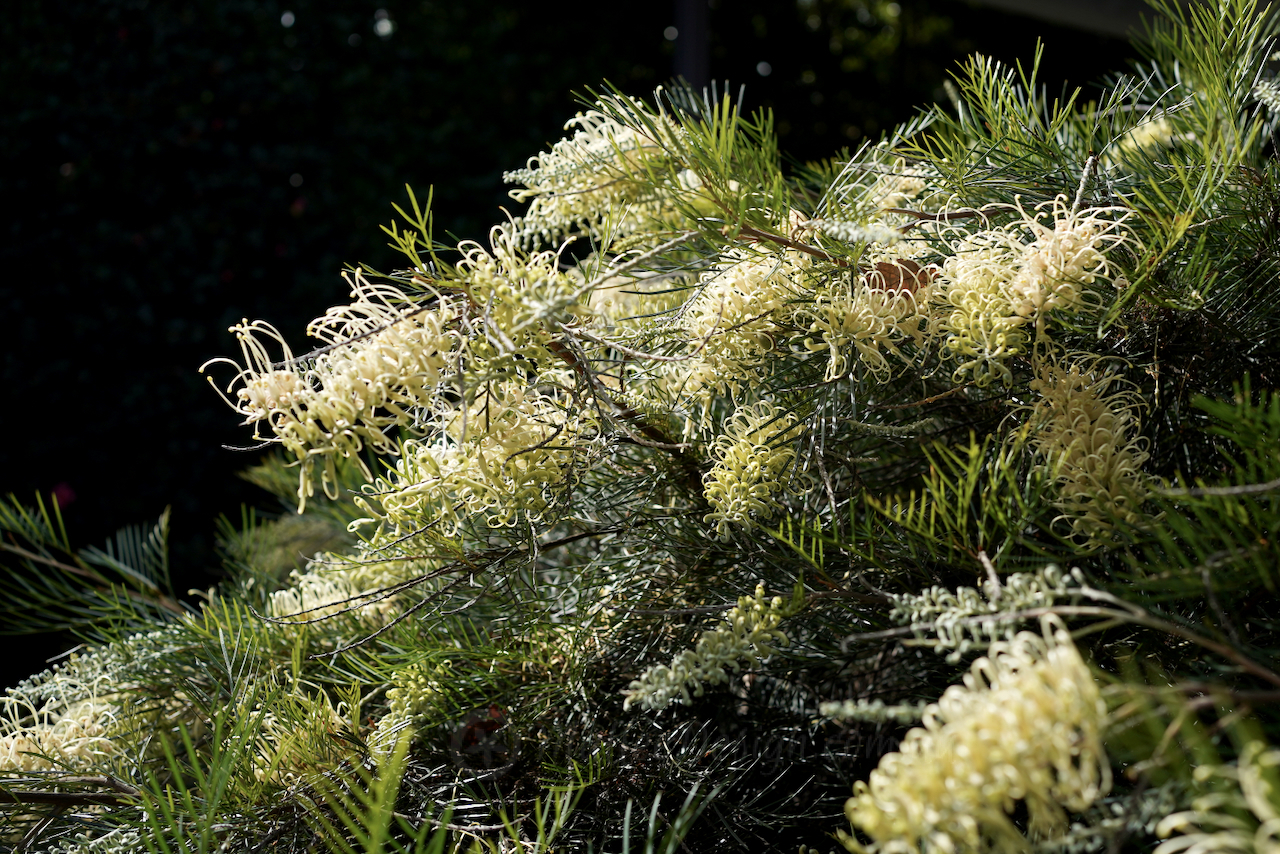
The purity of Grevillea ‘Ivory Whip’
I am quite selective and fussy when it comes to large flowering spike Grevilleas, some of them I find incredibly garish and I dislike the way they attract the aggressive nectar feeding birds. For some reason this medium sized Grafted Grevillea remains an exception for me. The flowers of Grevillea ‘Ivory Whip’ are not in…
-
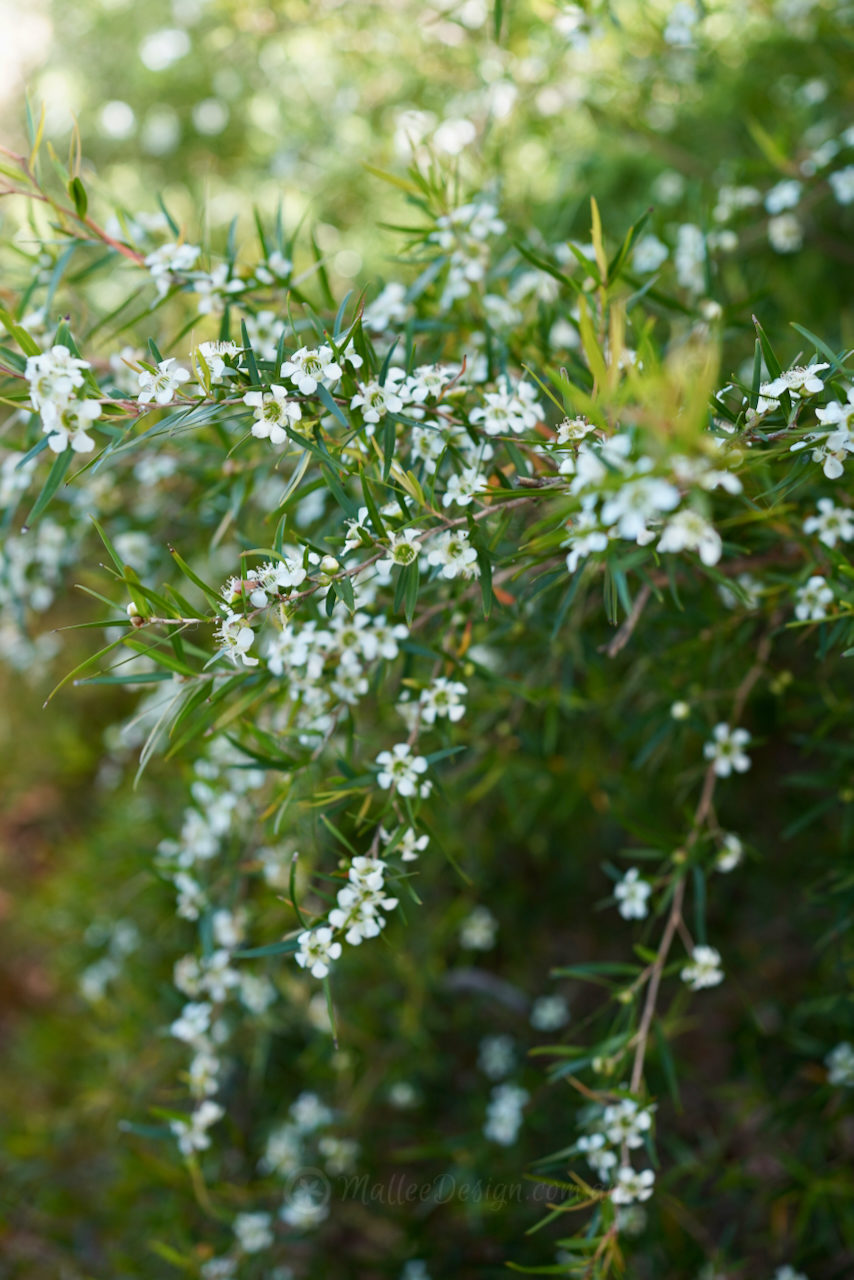
The perfect Scented Screen: Leptospermum ‘Little Lemon Scents’
This dwarf graceful, weeping tea tree is a wonderful addition to any garden, it can be used as a privacy screen, in a mixed hedge or as a soft backdrop in a layered planting. The compact habit of Little Lemon Scents is far smaller growing and more shapely than its parent, Leptospermum petersonii (Lemon-Scented Tea…
-
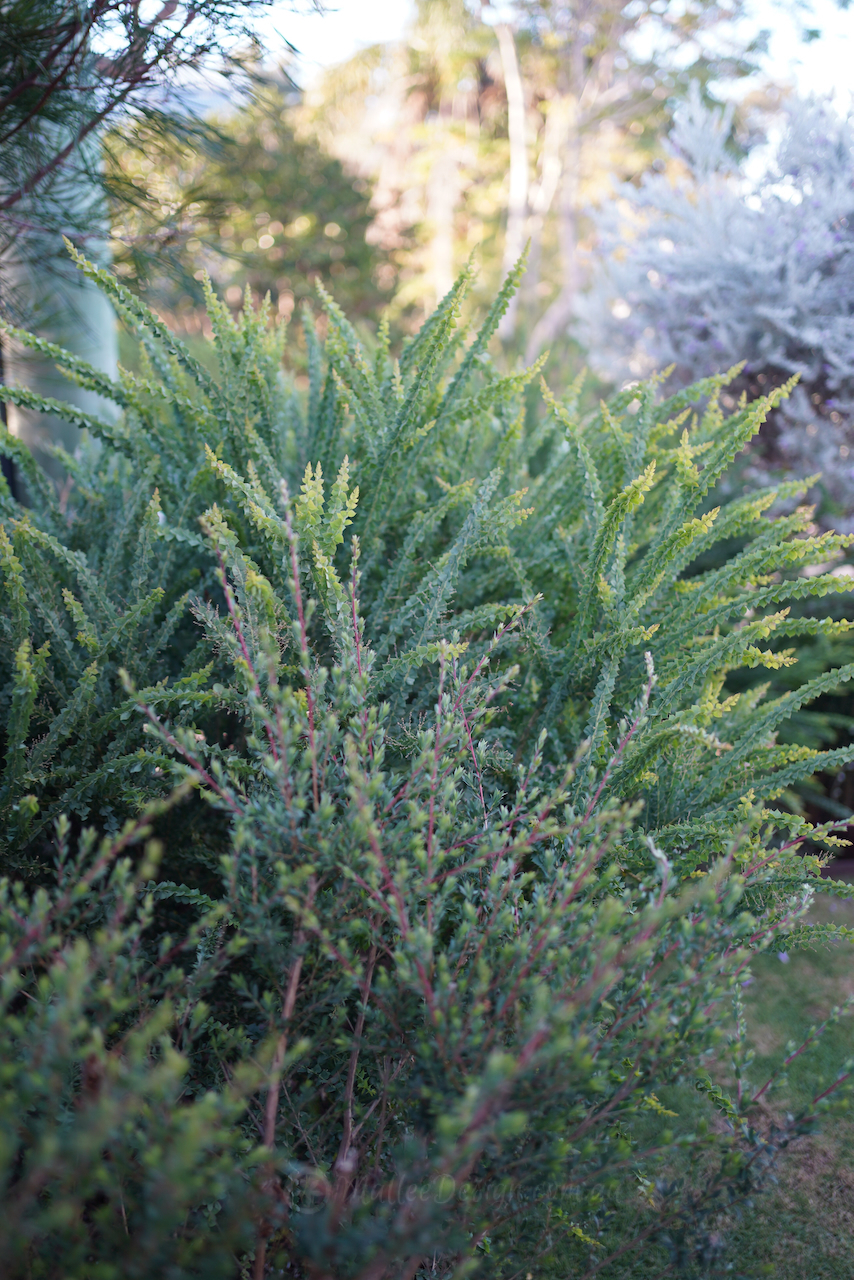
What to Plant for Poorly Drained Soils and temporary inundation
I am adding to this post as here on the East coast of NSW we continue to have flooding, heavy downpours and associated erosion. It has been over 3 years of this tumultuous weather and this particular blog post has been getting quite a lot of visits. The past few years have also given me…
-
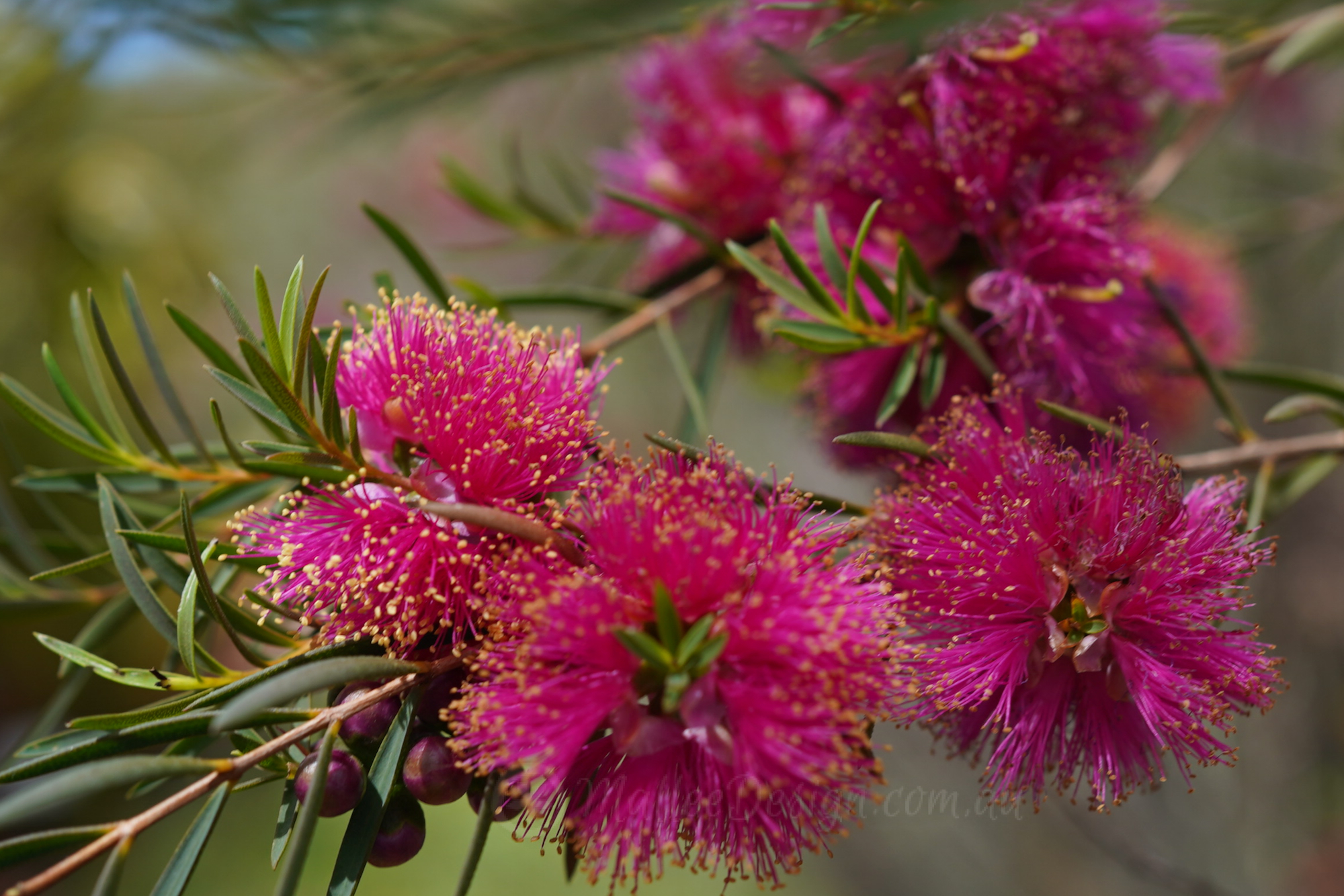
Distinct hot pink: Melaleuca fulgens
Melaleuca fulgens hails from the West of Australia, no surprise there, however it can be found growing in the southern and eastern states quite happily. This species has a long flowering period from Winter through to Summer and as the blooms are such a bright highlight it is hard to miss. This is the pink…
-
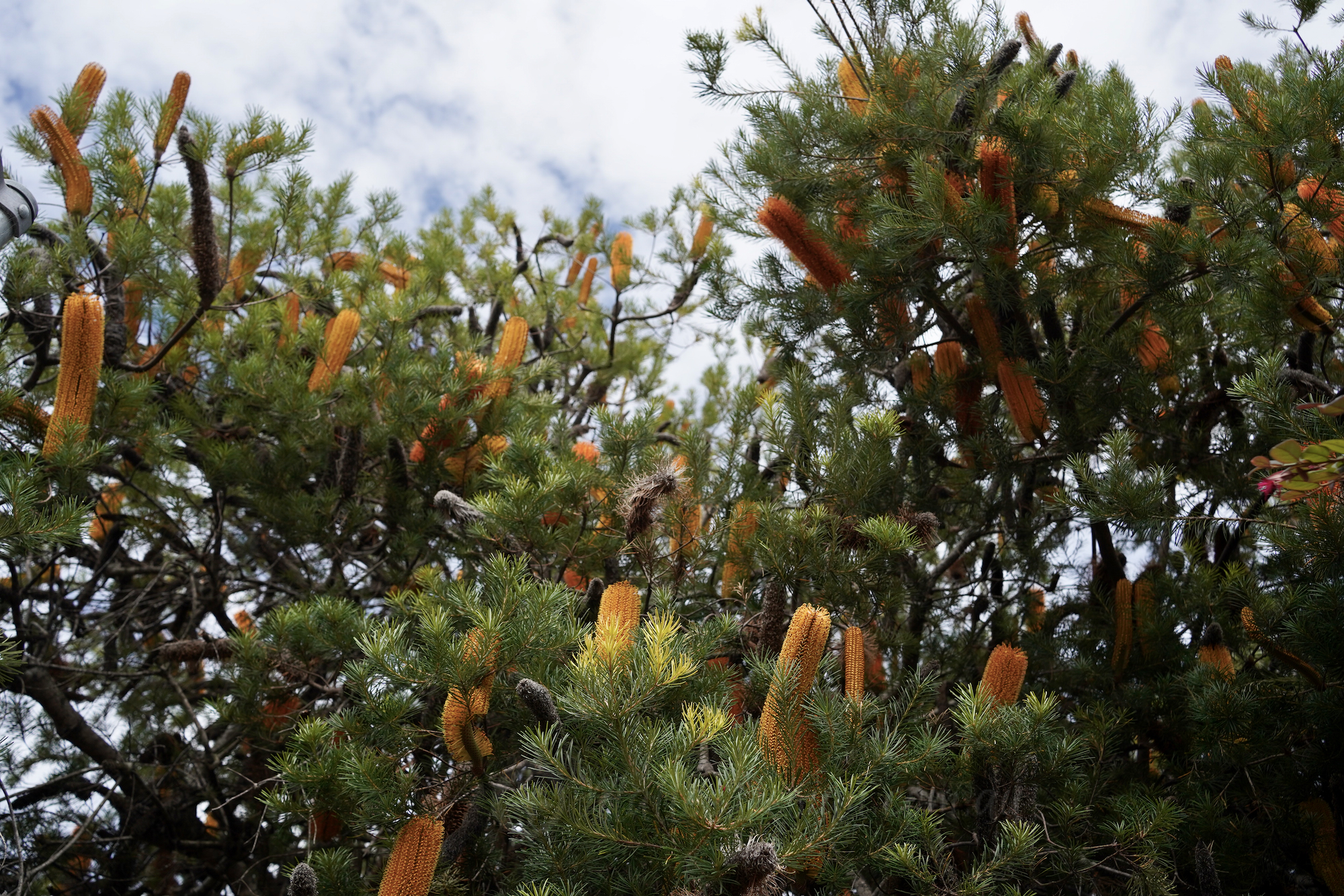
The show stopping: Banksia ‘Giant Candles’
This superb specimen of Banksia ‘Giant Candles’ forced me to drive around the block a couple of times before I could find a park and give it the photo shoot it deserves. This extra large shrub or, as I prefer to call it, small tree is a cross between Banksia ericifolia and Banksia spinulosa. Somehow…
-
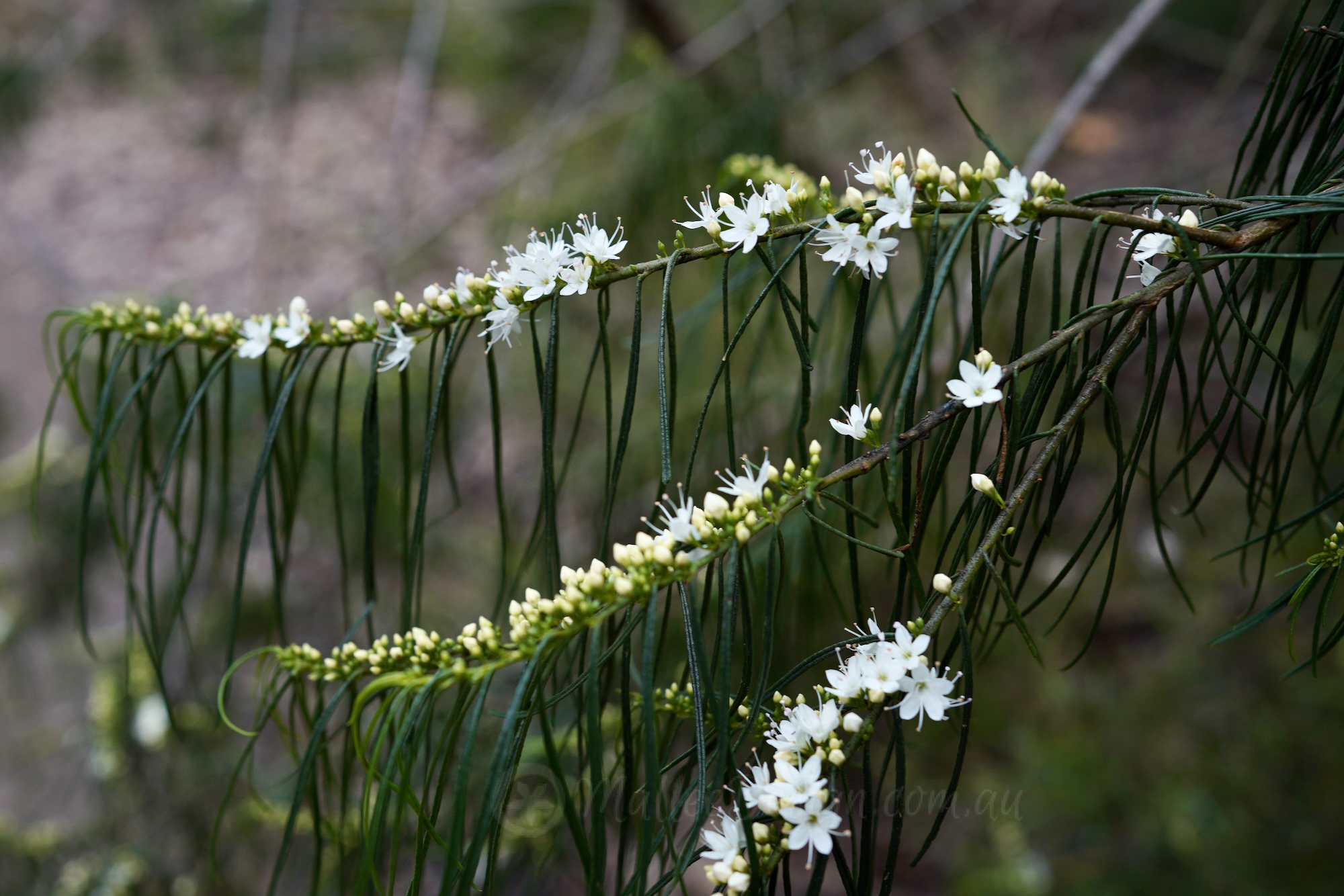
The most weeping of the weeping: Myoporum floribundum
I am obsessed with plants with a weeping habit or drooping foliage, some people find them sad and depressing looking but they are my favourite. There are many native plants with soft long leaves or gently falling branches, they can create dense screens, focal points or backdrops. Weeping foliage in a garden gives a relaxed informal…
-
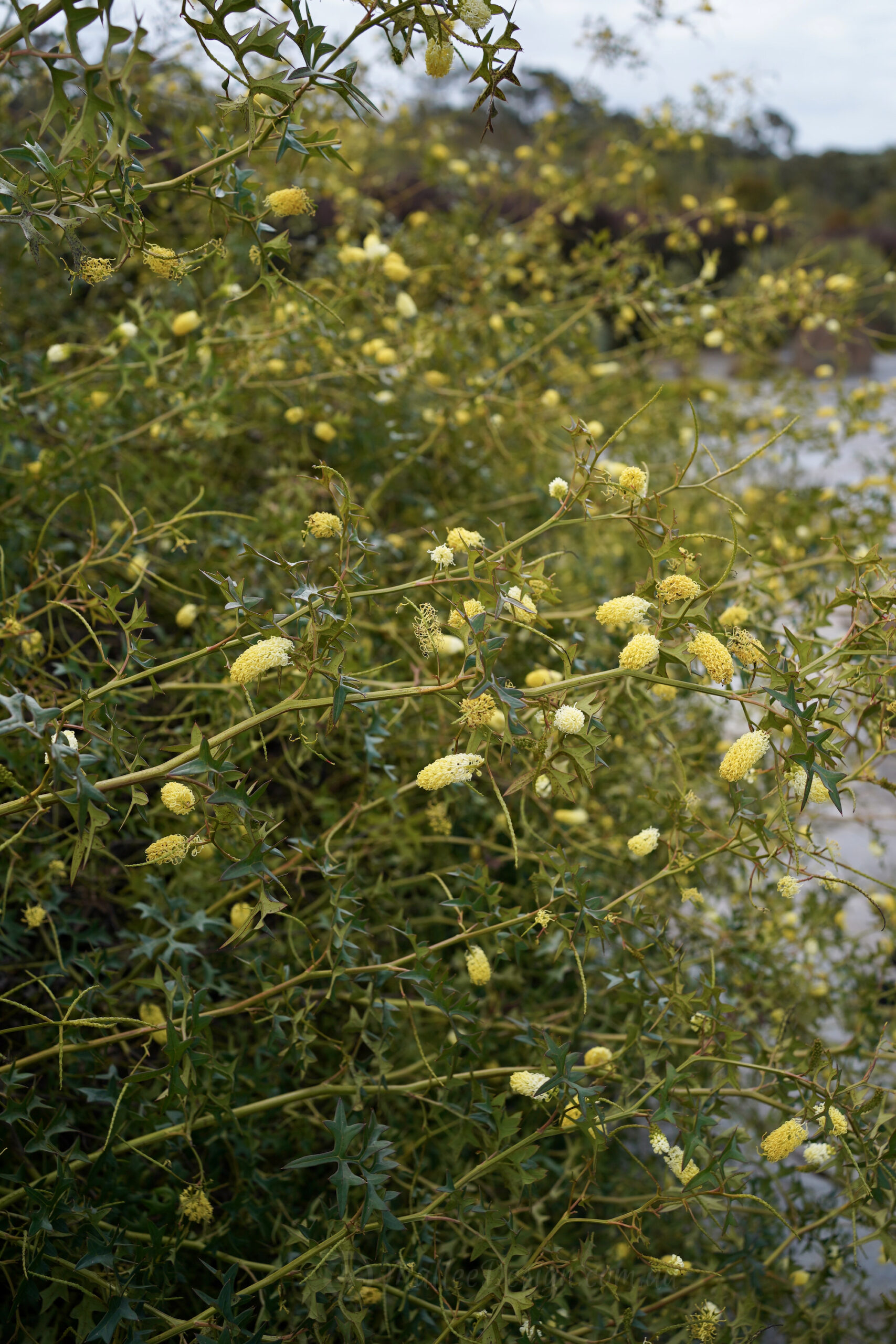
A spikey, perfumed tangle of Grevillea flexuosa
This is a wonderfully messy Grevillea that likes to sprawl all over the place. Its stems literally get tangled in themselves and the leaves are stiff and spikey so they can almost grab onto other plants to hoist themselves towards the sunlight and as its name implies it is so very flexible 😉 Grevillea flexuosa…
-
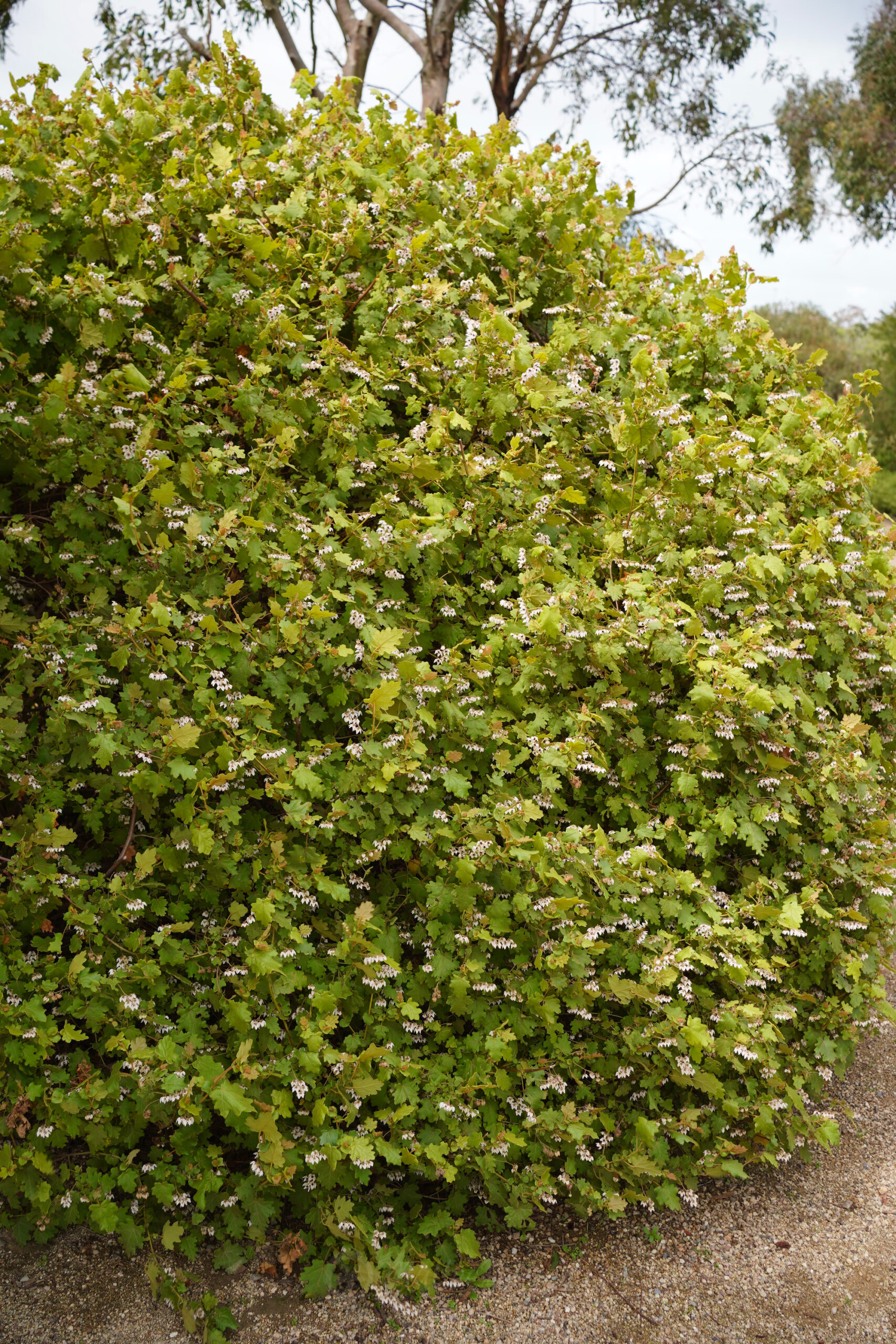
The limitless potential of Thomasia solanacea
I have written about this genus before but thought this species needs its own space on the blog as it really is an extremely versatile medium shrub. It is one of those plants for a trickier spot in the garden as it loves a dry shady position. It is endemic to south-west WA, it is…
-
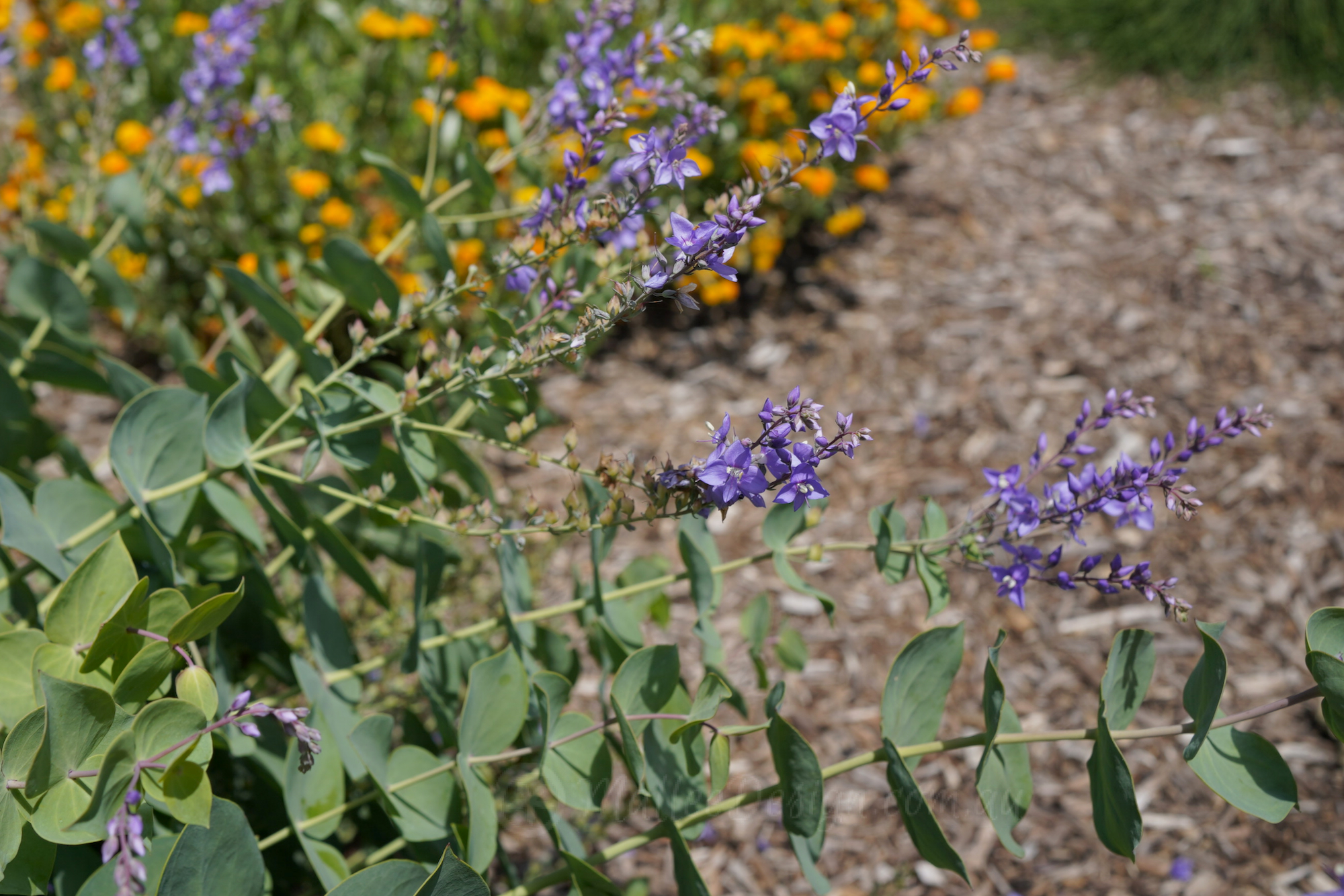
Lovely shrub of many names: Veronica perfoliata
This is to my knowledge currently Veronica perfoliata, it has gone through several differing identities and name changes, I won’t go into all of that, it just seems a shame as I think it may have detracted people from knowing about this useful plant. Firstly I love it because it has a very Eucalypt like foliage…
-
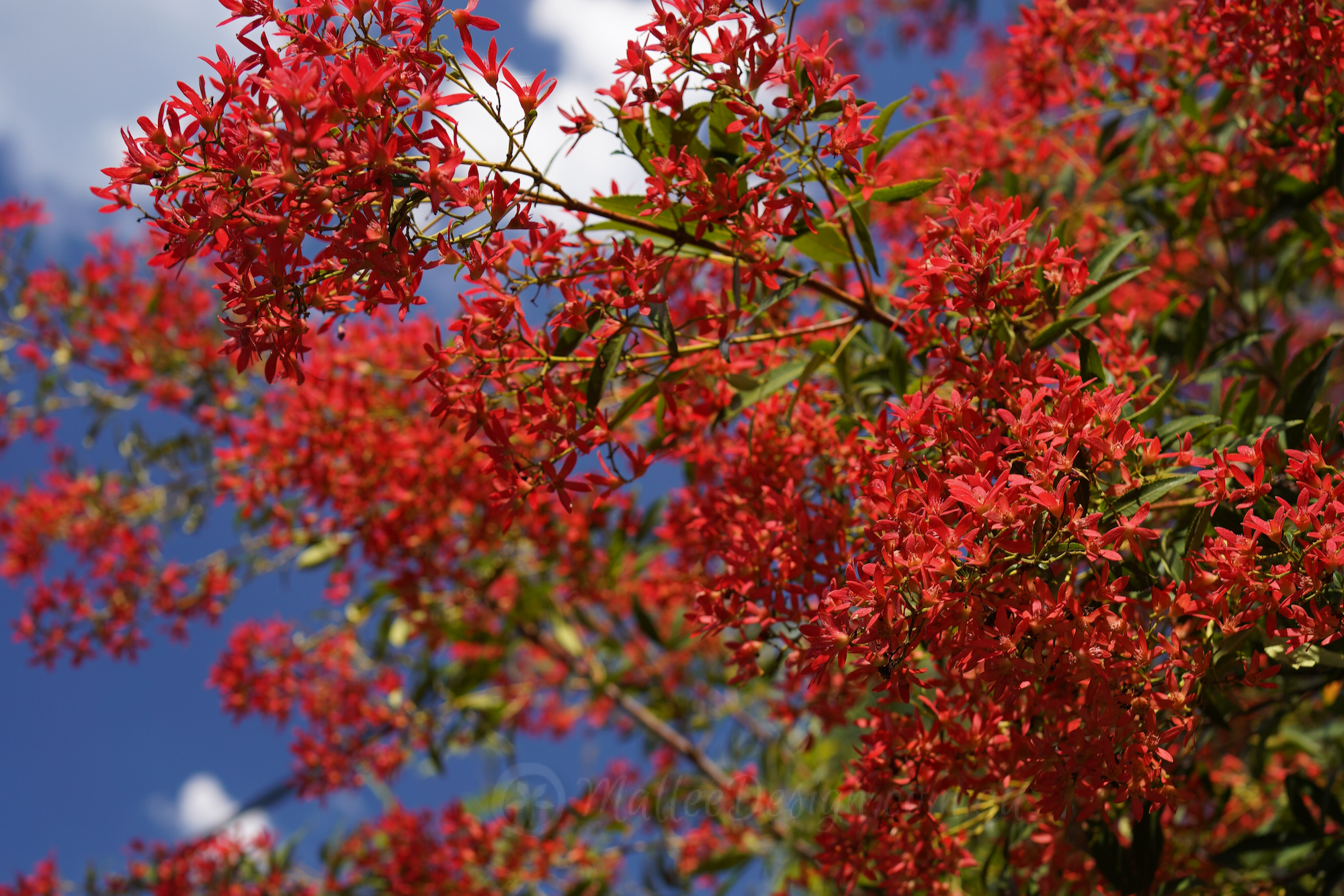
Merry NSW Christmas Bush: Ceratopetalum gummiferum
I am a bit of a Grinch when it comes to Christmas and often one of the things which pulls me our of my un-festive slump is our Ceratopetalum gummiferum or native Christmas Bush. This year I was a little late, as many have finished thier show by the time Christmas actually arrives. However, I…
-
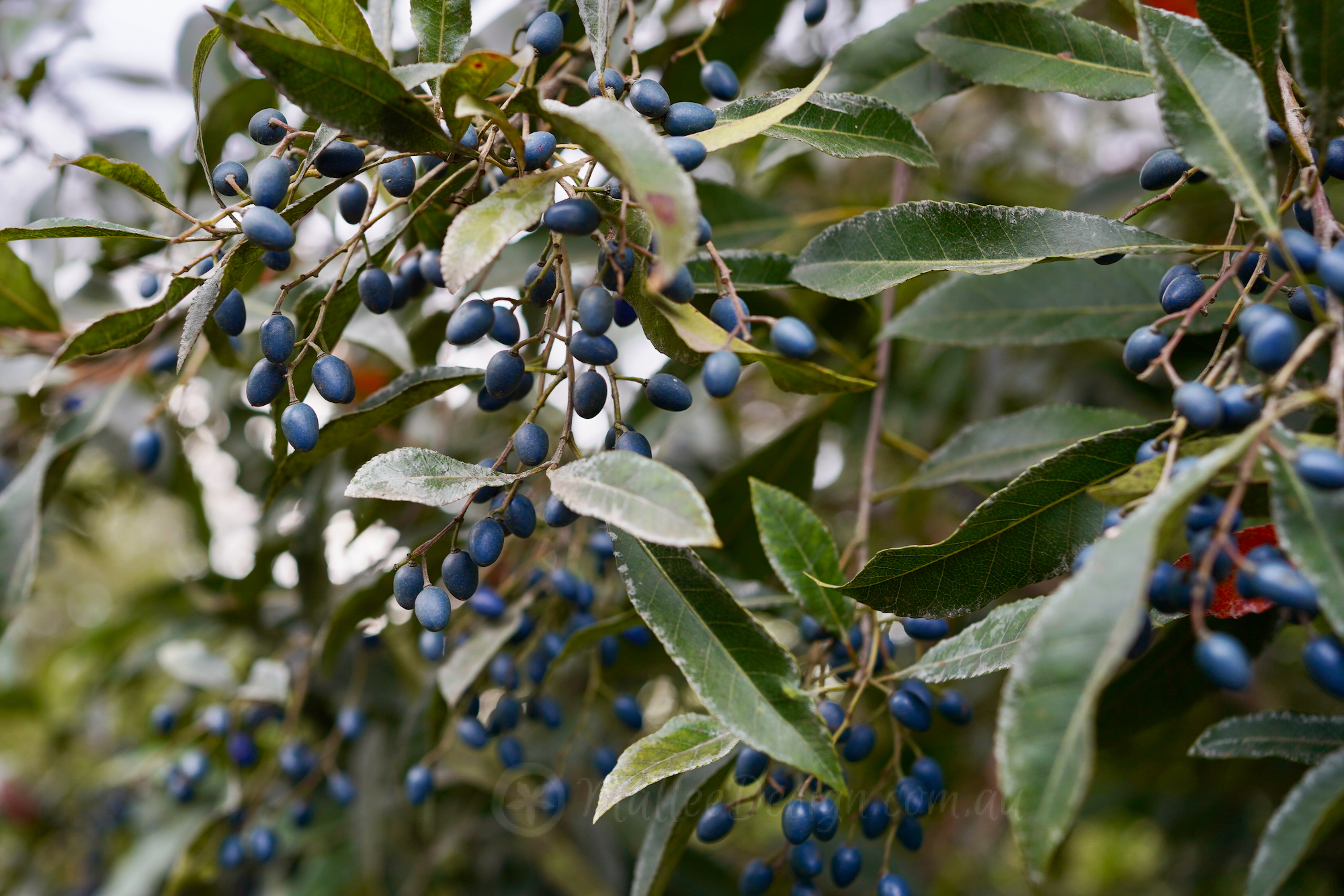
White or Pink? How do you like your Blueberry Ash? or covered in blue berries
Elaeocarpus reticulatus is one of the Spring flowering native tree species which really knocks itself out during its flowering season. It consistently covers itself in the little white fairy skirt like flowers to the point that it gives the whole tree a light hue. The other time of year this species looks incredible is when…
-
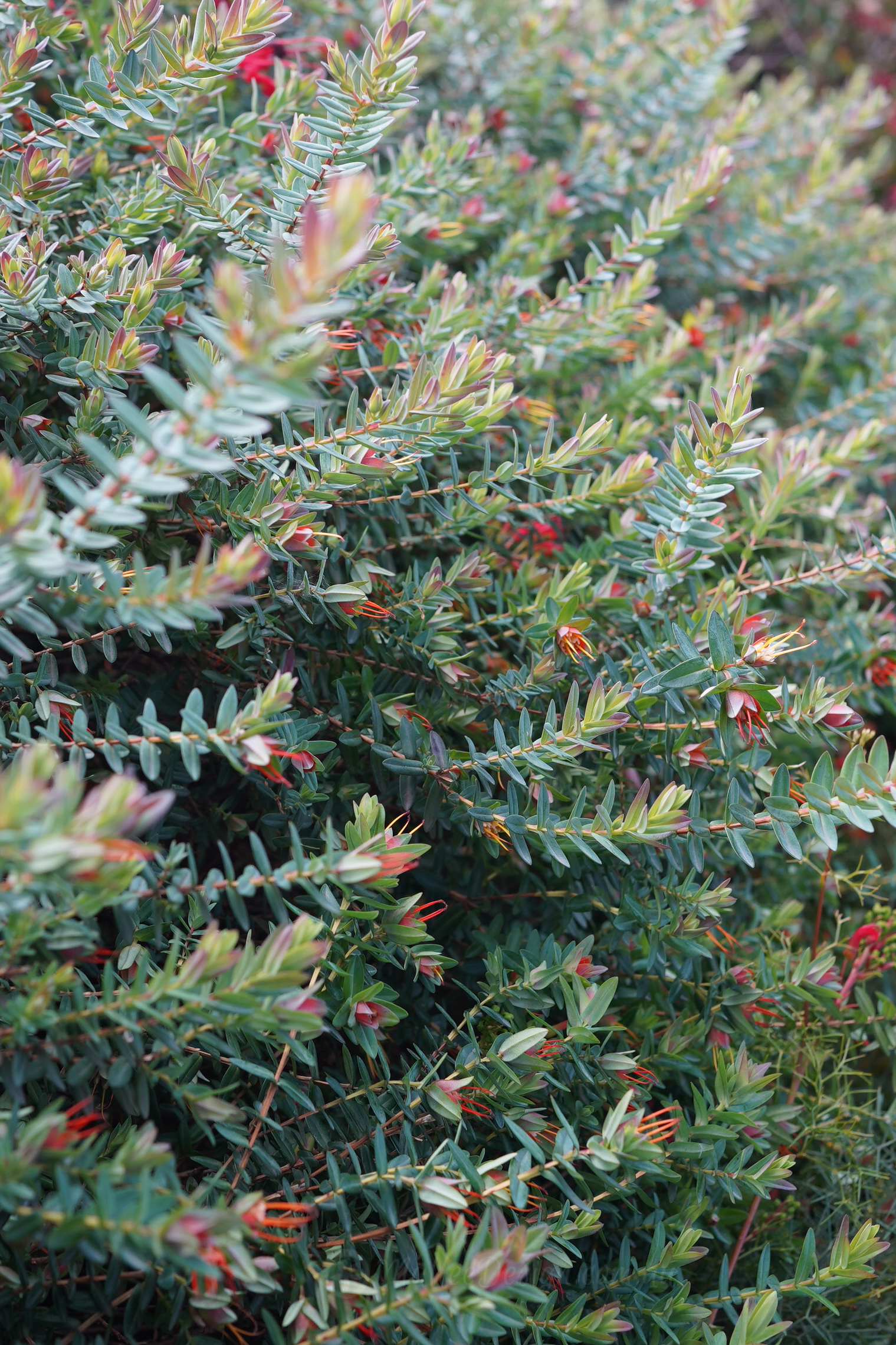
Darwinia citriodora another WA toughie
To be honest I didn’t realise this lovely medium shrub hailed from the West, silly me. I think I assumed Darwinias were local to coastal NSW due to the prominence of taxifolia and fascicularis when I go bushwalking close to home. They are a stunning Genus, all have intresting leaf structure and get covered in…
-
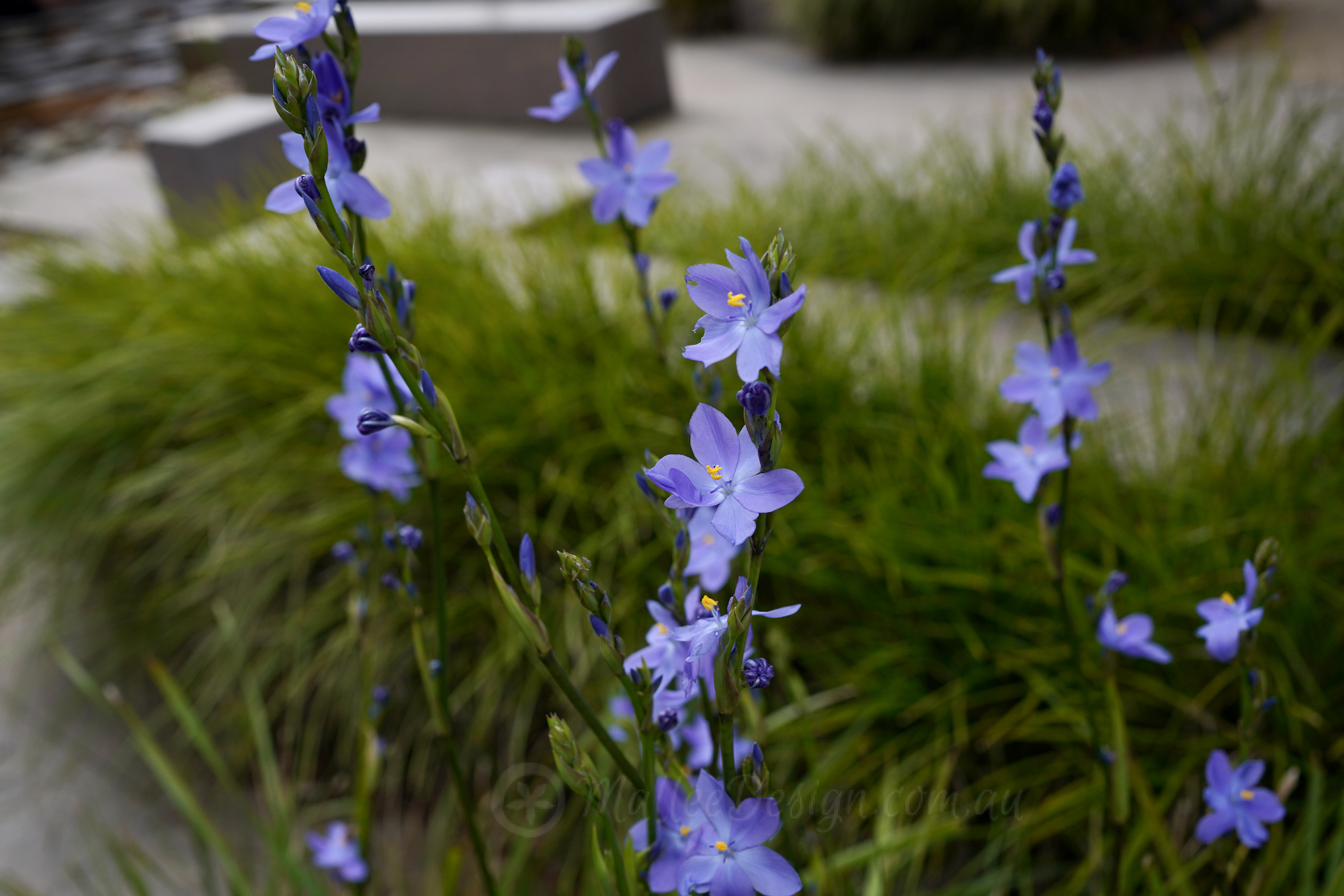
Good morning Iris: Orthrosanthus multiflorus
The flower spikes on the morning Iris really do say good morning all through Spring, it is such a luminous shade of deep blue almost purple that is impossible not to notice. The flowers are displayed on upright stems rising almost a metre above the tufted foliage. Orthrosanthus multiflorus can be found growing naturally on…
-
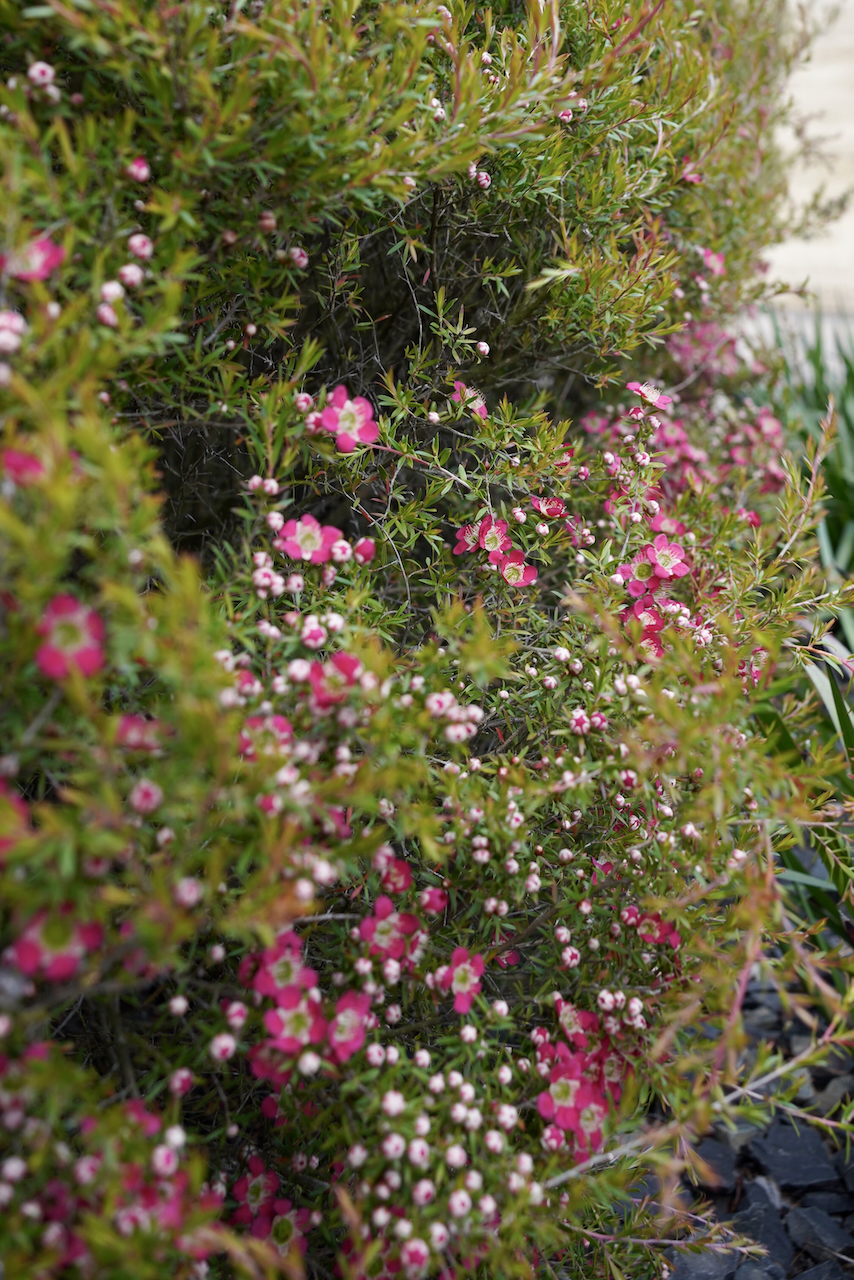
The oh so fun Leptospermum ‘outrageous’
Leptospermum ‘Outrageous’ puts on a show of brilliant pink-red flowers in Spring, and it absolutely covers itself as the weeks go on. This medium shrub has delicate weeping branches and it can be pruned into a low hedge or border plant. It is also showy enough to be a great feature shrub even when not…
-
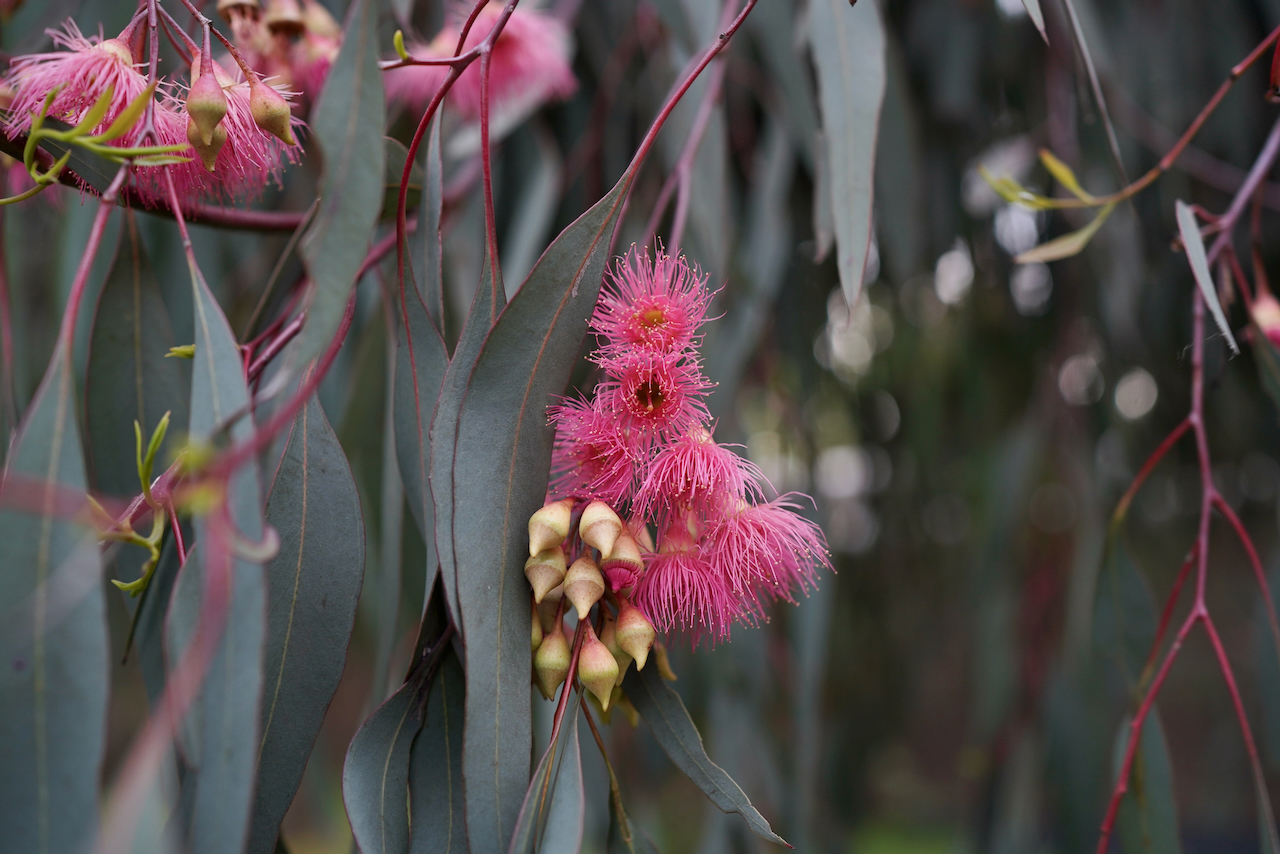
‘Red Iron Bark’ – Eucalyptus sideroxylon Rosea
I live in Iron Bark territory, on a clay soil, near the coast, the local Iron Barks stand up to the strong coastal winds and often boggy soil. One introduced Iron bark that does very well in my area is Eucalyptus sideroxylon Rosea, this is a stunning medium sized tree, that I gladly recommend for…
-
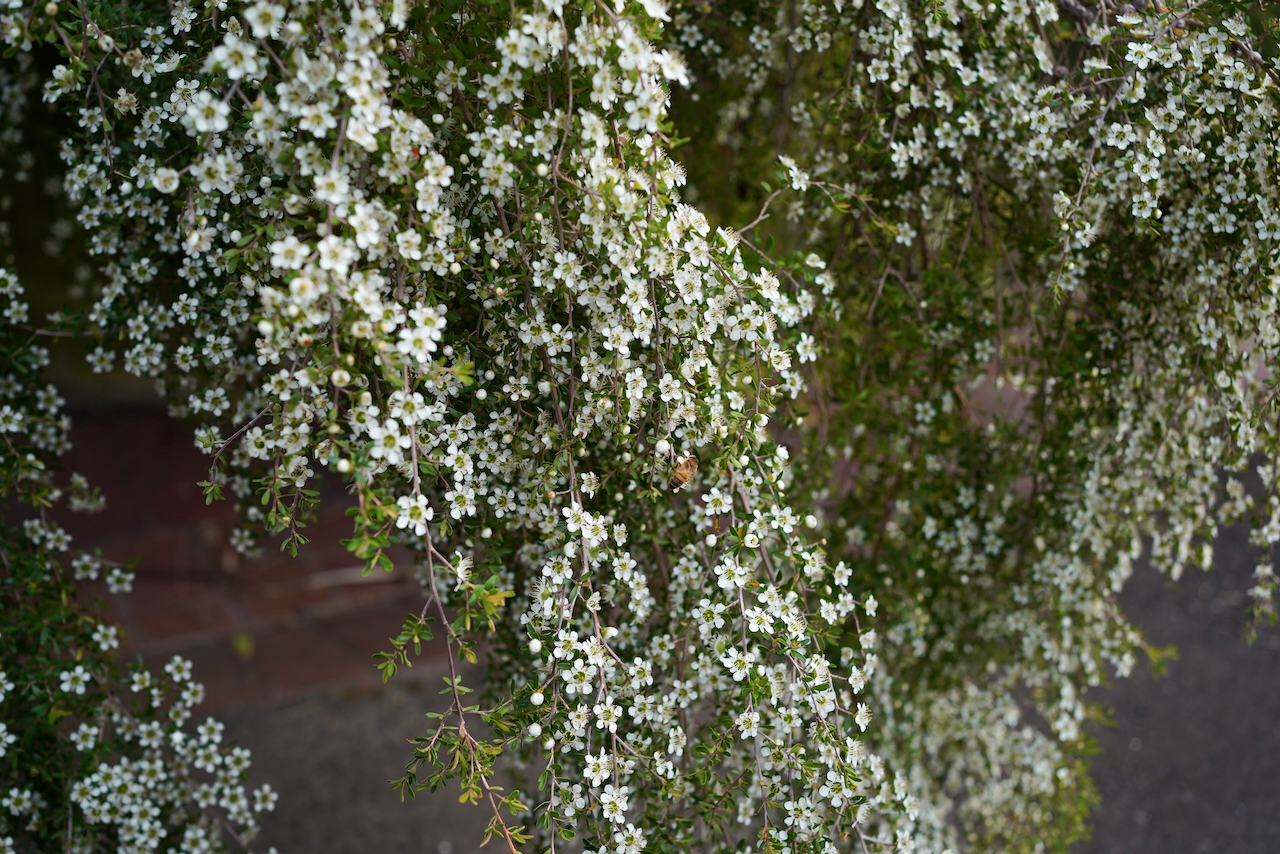
Spillover for the pollinators: Leptospermum ‘vertical drop’
Most of us know how wonderful Tea trees are for our pollinators and honey bees, and Leptospermum polygalifolium is up there with some of the most floriferous. This gorgeous low growing and cascading form is Leptospermum polygalifolium ssp. cismontanum ‘Vertical Drop’. This sub species naturally grows on the east coast of Australia in sandy and…
Tag: bee attracting

